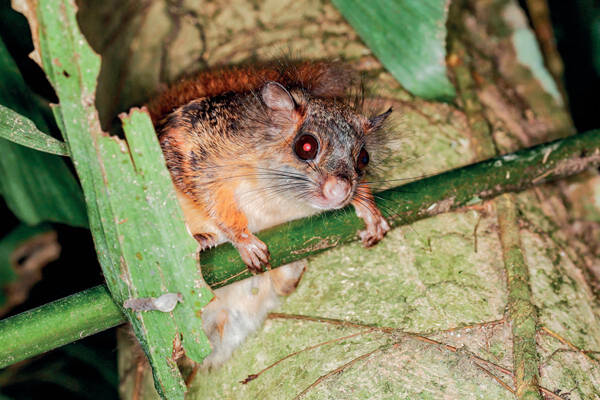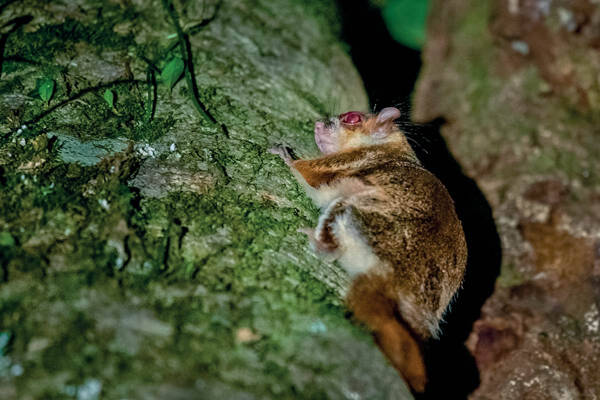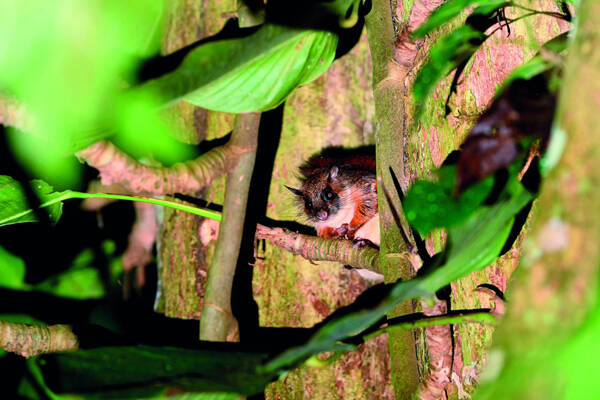Belomys pearsonii Gray
IUCN
LCBasic Information
Scientific classification
- name:Belomys pearsonii Gray
- Scientific Name:Belomys pearsonii Gray,Hairy-footed Flying Squirrel,Brown-eared mouse, hairy-legged mouse
- Outline:Rodents
- Family:Rodentia Sciuridae F.Squirrel
Vital signs
- length:18-26cm
- Weight:About 150g
- lifetime:10-15years
Feature
It is a larger species among the small flying squirrels. There is a notch on the dorsal edge of the ear and a tuft of long hair on the front and back of the ear stem.
Distribution and Habitat
In China, it is distributed in Yunnan, Guizhou, Guangxi, Hainan, Guangdong and Taiwan. Abroad, it is distributed in India, Myanmar, Vietnam and Laos.
It is nocturnal and lives in tropical and subtropical primeval forests.
Appearance
Small flying squirrel. The snout is relatively long. The ears are relatively small and notched. There are noticeable tufts of hair on the front and back of the ear base. The body hair is soft and shiny. The back is red (brown) brown, mixed with small white patches. The abdomen is light brown (red) brown. The backs of limbs and feet are covered with hair. The tail hair is fluffy, the back of the tail is brown, and the belly is brown.
Details
The hairy-eared flying squirrel is a tropical small flying squirrel that usually lives in pairs at night and does not hibernate. It comes out of its hole at dusk to look for food. It mainly feeds on the tender branches, leaves, flower buds and fruits of various plants, such as banyan fruit and mango.

Hairy-eared flying squirrels mostly use tree holes as their nests. The structure of their nests is quite delicate and is divided into three layers. The outer layer and the bottom of the nest are woven with dead branches, the middle layer is woven with long fibers of a light white dry branch, and the inner layer is a hair-like fiber floc that is tied tightly and not easy to break. The nest is about 20 cm in diameter and is oval. There is also a shelter on the top of the nest.

The breeding season is from April to August, with one litter per year and 2 to 4 cubs per litter.
The individuals are small and the number is not large. Due to incomplete biological data, the specific number is unknown, but the overall number is on a downward trend.
The hairy-eared flying squirrel is an endangered species and is listed in the 2008 Red List of Endangered Species of the World Conservation Union (IUCN).









